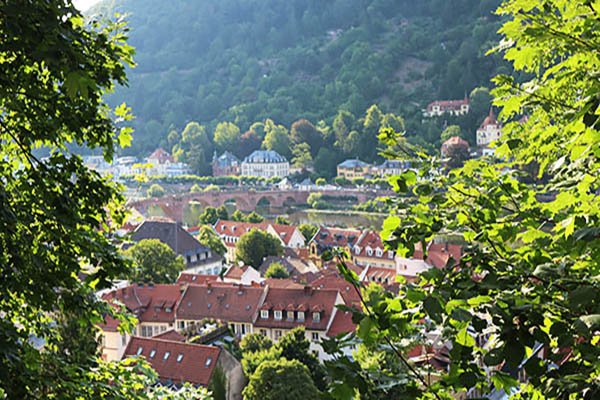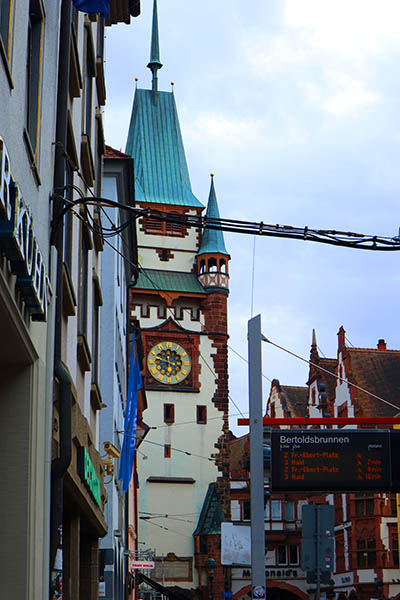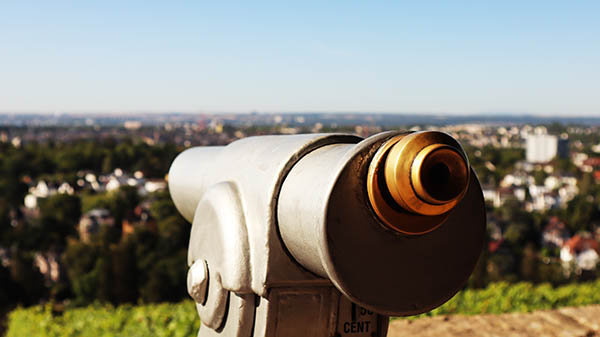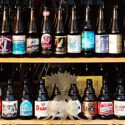There are wondrous places tucked away in the mid-west and southwest of Germany. There are visible traces of the constant interaction with neighboring Belgium and the Netherlands where the borders have often changed. Distances between cities and nature by train and road are relatively short here. To compare with a journey from the north to the south of Germany, take for instance a train ride from Hamburg to Berlin or Munich, which both means a considerable journey of at least four hours. In comparison, by leaving Frankfurt by train towards Heidelberg or Freiburg im Breslau, the traveler only has to look forward to a one-hour or two-hour journey. Frankfurt is in the southern part of Hesse. Where Hesse ends in the south, Baden-Württemberg begins. That simple fact makes Frankfurt a good starting point for exploring western Germany.
The region where the borders of Germany, Belgium, and the Netherlands intersect holds many wonders. Where Aachen begins, is just where the Netherlands stops in the west. And south of Maastricht at the very southernmost tip of the Netherlands is where Belgium begins. Valkenburg is nearby and also has the only remaining hilltop castle in the Netherlands. From Maastricht, it is a short train or car ride of about 20 minutes to Aachen. The sneltrain in the Netherlands, a “fast train”, connects the country with Germany and offers modern and comfortable seating. So from the south of the Netherlands, such as the medieval wonder Maastricht, you can expect a smooth ride that enables you to take in the sight of rolling hills and patches of trees. When onboard any train in the region, you will notice that you are close to Belgium and Germany, as the announcer speaks Dutch, French, and German. Quite a clear sign that the people of each country are very much connected geographically and a short train or car ride away from one another.
As you approach Aachen and Germany from Maastricht, the smaller towns and suburbs increase. The occasional bicyclist can be seen on the country road that runs next to the train track. The landscape here is not as flat as further up north in the Netherlands. This beckons a half-formulated thought and question, whether somehow the borders were inspired or affected by human disposition by the geography of the region. Leaving the thought behind as it is way more enjoyable to watch the rolling hills outside, the train pass by close to Kerkrade and crosses past the border into North Rhine-Westphalia. The village becomes Herzogenrath as a street sign outside informs and it is clear at once, that we have entered Germany.
To go south from Aachen, the intermediary stop Frankfurt may not have that definite allure for the tourist. However, it is worth recalling that Frankfurt has some of the best train connections, and highways, stretching out in various directions. For the sake of this article, we are more interested in the roads and trains that can take us further south, towards the Black Forest, Alsace, and even the Alps. There are several cities and places south of Frankfurt that are worthy of a visit during a road trip. So it turns out that paradoxically this modern capital of finance in the west of Germany is a perfect place to begin exploring nature and historical places southwest of the country, and beyond.
Let us look much further south of Frankfurt, close to the southwestern tip of Germany, where Freiburg im Breisgau is neatly placed by the border to France, with Colmar merely 35 kilometers away. From there we will work our way up north.
Freiburg im Breisgau
Freiburg im Breisgau is just a stone's throw away from the French border. The region the city is in, Baden-Württemberg, has made a name for itself with its Black Forest which has earned its reputation as a romantic and mythical place. What may not be as well known is that it has a strong economy with both electrical and mechanical engineering industries. The borders to France and the Alsatian wine region and Switzerland with its Alps make the region a stepping-stone to southern Europe. Tucked away far in the south it is a western gateway to the Black Forest that invites travelers to explore further with Alsace in France to the west, and the Alps in Switzerland to the south.
Heidelberg
Let us look to the north of Freiburg im Breisgau, closer and the south of Frankfurt. There we find Heidelberg which is in the northwest of Baden-Württemberg. Not far from the easternmost border of France stands the Heidelberg Castle which towers over the city that can trace its history back to the 12th century. Heidelberg is often associated with its castle perched on a hill above the city. Down below and visible from the castle walls is the town square that has been preserved with its cobblestone look from hundreds of years back.
Wiesbaden
We continue looking north of Heidelberg and find Wiesbaden practically on the outskirts of Frankfurt. The Romans were here and fought over the Neroberg, a hill reaching some 240 meters up in the sky. High above the city, where the Nerobahn rail goes up the hill, there is a swimming pool and a terrace where one can reminisce on the past of this place. In the 19th century, this became known as a spa resort. Perhaps what is most striking is the relatively small Old Town, surrounded by shopping streets. The closer one gets to the .. park, the more brilliant houses become, until they are as matter of fact, mansions. The paths up to Neroberg are steep. Unless you choose the Neroberg Bahn, there are two convenient footpaths, one through the woods, and one paved road but for a small stretch through the woods.
When up on the summit, there is the Tempel am Neroberg which lies close to the viewpoint of Wiesbaden unfolding with the Nerotalpark and a panorama of houses below.
So what can you do in all these places?
With this abundance of places to visit in the west of Germany, and across the border to France, you might wonder what more you could do than take in sights and snap travel photos. These are not just picture-perfect places to gaze at buildings or sights. There is also an abundance of fun activities to check out. Bicycling, skiing, hiking, and boating. The options are many and are best underscored by the more than 30 lakes that exist in the region, 17 grand palaces, and the rivers Rhine and Neckar making their way through. To be sure, if you want to include some physical exercise as you experience Baden-Wurttemberg, there are plenty of options. Explore and enjoy.






